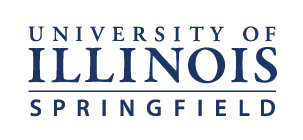Genre
Genres are often thought of as category labels designed to sort and separate. For example, many of us are familiar with music genres like hip hop, country, or rock. However, genres, particularly writing genres, are more complex than a category label. Instead, Amy Devitt argues that genres are a flexible response to a need within a community that has certain patterns and rules. Here is a breakdown of the different parts of Devitt’s definition of genre.
Flexible Response
Many situations and events call for writing genres to act in response. For example, if there is a manufacturing issue with a car, the car company must issue recalls and let the consumer know there is a problem. In this situation, the car company’s response might include a press release, an informational article on their website, a printed ad, or even phone call scripts. All of these different genres move to respond to the crisis.
The word “flexible” is also important. Genres can change and develop over time as new technologies and needs arise. However, some conventions may need to stay the same; while an email’s tone may shift from formal to informal, there is nearly always a subject line with all emails that expresses the message’s purpose.
Need
All writers have particular needs, and when writing, it is important to think about why a genre is needed in a community and what it needs to do. For example, the government has a W2 form, which is used to capture work and tax information from workers in the US. To collect all this information, the government needed a genre that would allow them to quickly and efficiently locate all the required information. That is why W2s are all standardized and require us to enter in the information in a standardized way. Without this form, it would take a lot longer to process everyone’s information which could lead to significant barriers for workers. Understanding how a genre meets these needs can help you write more successfully in that form.
Community
Communities are groups of people united by a common purpose. Communities that use writing genres, often referred to as discourse communities, have set genres that they use. For example, teachers act as a community united by the purpose to instruct students. To accomplish this purpose, they use genres like lesson plans and assignment sheets. Even a sorority will likely have set writing genres they will use (like meeting minutes) to keep the group together and organized.
Rules and Patterns
Have you ever had a question about a grammar rule and been told the answer depends on the situation? Each genre has established rules and patterns for what is and isn’t acceptable. A rule for a genre is a restriction or requirement whereas a pattern occurs frequently within the genre but is not required to be there. For example, when writing a Tweet, there is a 280-character limit on Twitter posts, which is a firm rule that all communities must adhere to. In contrast, using hashtags is considered a pattern since it occurs frequently, but it is not a requirement. For each genre, communities standardize and determine what rules and patterns are considered acceptable and unacceptable in their genres. For instance, when looking at the tone of Twitter posts, companies promoting themselves on Twitter tend to use more formal, less inflammatory posts when compared to internet trolls. Understanding these rules and patterns will help you write in different communities more successfully.
Note:
Most people think of writing genres like romance, mystery, and sci-fi. However, many people don’t realize that the writing they engage with every day are genres. Social media posts and even grocery lists are writing genres that follow specific rules and patterns. Below, we have taken several different texts from our Learning Hub community to show how we have presented ourselves and adhered to the conventions in each genre.
The Writing Genres of UIS' The Learning Hub
Facebook Post

- Since this is a Facebook post, the content is meant to be engaging with a young student audience. Promoting our services while mentioning Pokemon Go and “needing an incentive to visit” indicates the Hub is aware of Facebook’s less formal expectations.
- The message is short and informal, but it does not contain any spelling or grammar mistakes.
- The location tag is also a key feature of the Facebook genre that may not be appropriate elsewhere.
- The use of the hashtag adheres to Facebook’s new hashtag system borrowed from Twitter.
- An image relevant to the topic is appropriate for a Facebook post and makes the post more engaging.
By the way! Like us on Facebook!

- Since the Learning Hub is writing an email to a student confirming an appointment, the subject line identifies this purpose of the email clearly.
- The purpose of the email is identified in the very first sentence of the email. The tone is formal, direct, and professional.
- The appointment times and dates are clearly represented and formatted in a visually appealing way.
- The procedures for the appointment, policies, and contact information is included. There are also outside links to prevent the email from becoming too cluttered.
- The signature at the end of the email is polite and includes location, contact, business hours, and other information the student would need to know.
Devitt, Amy. Writing Genres. Southern University Press, 2004.


